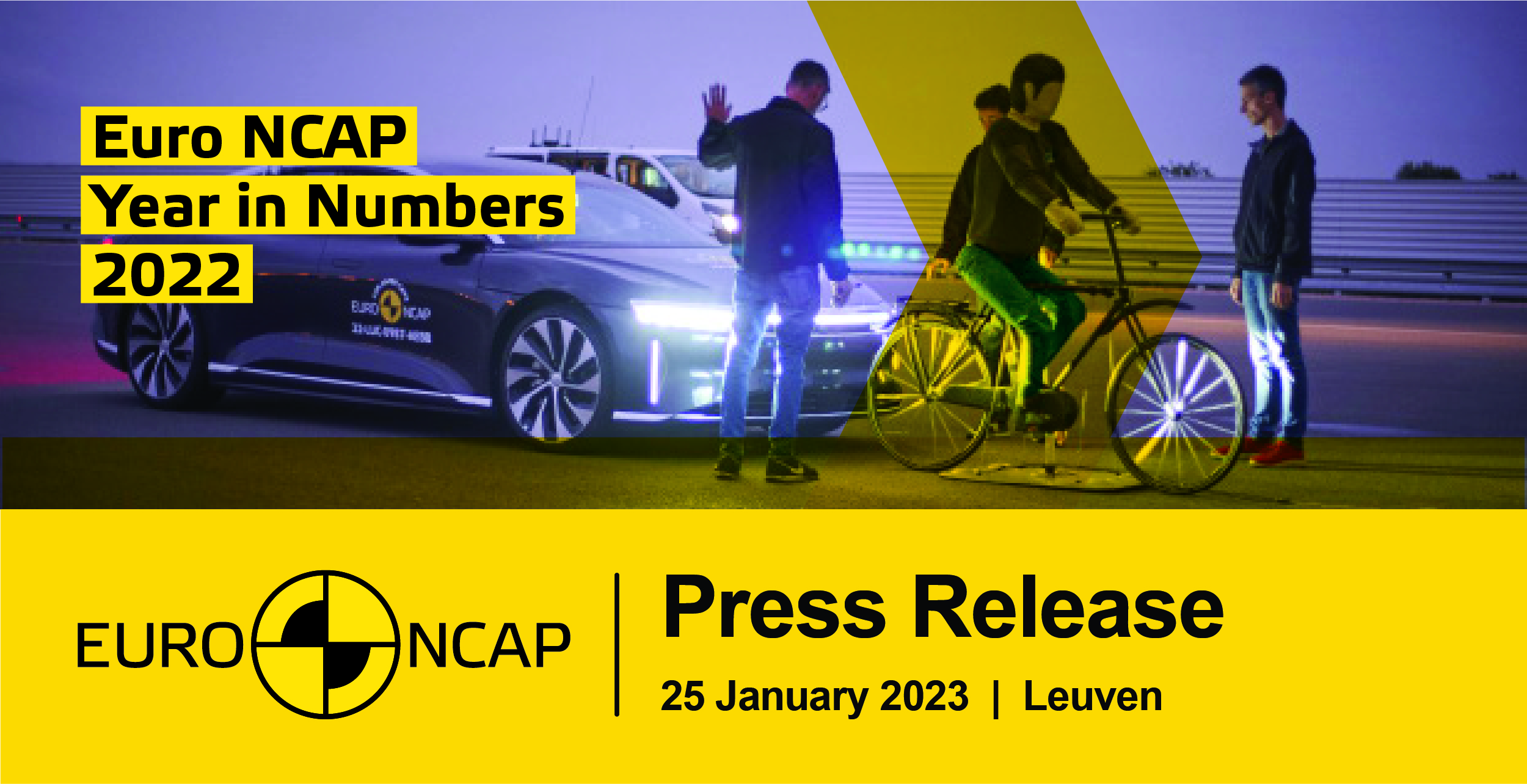Euro NCAP releases its Year in Numbers for 2022: China and electric vehicles predominate
25th January 2023

Today, Euro NCAP releases its annual Year in Numbers where we consider the highs and lows as well some of the emerging trends of the year that have appeared throughout one year of results. 2022 will be remembered as a record year. Never before did Euro NCAP conduct as many safety tests or have so many newcomers in the programme. The addition of Austria and Norway as new members also increased Euro NCAP’s geographic coverage.
During 2022, overall, Euro NCAP published a total of 73 safety ratings, of which 67 were for brand-new car models, including 65 models with the lowest safety specification and two ratings for models with optional equipment - and six for variants of previously tested models.
2022 has been an exceptionally challenging year for the automotive industry. Not only has the sector had to deal with new safety, emission, and cybersecurity regulations, but it has also had to contend with the economic repercussions of the invasion of Ukraine, Brexit, and the challenges related to shortages of semiconductor chips, materials, and labour. Out of respect for these challenges and to ease the burden on industry, Euro NCAP delayed the introduction of its new protocols until the beginning of 2023.
Taking advantage of the additional year, the latest models scored very well against the criteria. 15 out of 65 cars received four stars (22%), while 50 cars received five stars (78%) overall. In contrast to 2021, no vehicles received three stars or less.
Amongst the emerging trends are the following:
- As in 2021, the EV market continues to expand quickly. In 2022, full electric vehicles made up 22 out of 65 new models, a percentage of 34% and five out of six Euro NCAP’s Best in Class winners were electric. Many new players have entered the European market, largely thanks to the increasing popularity of EVs
- Seven brands made their Euro NCAP debut in 2022, six of which originate from China
- Centre airbags to reduce injuries in far-side crashes are one of the new safety elements that have recently been recognised. Of the 65 new cars examined, 47 (72%) came with standard front-seat centre airbags
- Attention assist systems are increasingly common in cars. In 2022, most vehicles evaluated by Euro NCAP, 94%, already included a system for detecting driver drowsiness. In 53 out of 61 cases this is delivered by monitoring of steering-wheel input and/or lane position, while in 9 cars direct driver eye tracking or a combination is used.
For Euro NCAP, 2022 also marked 25 years of making cars safer. Looking back on the progress we have made with our sponsors, test labs and partners, and how different safety looks for consumers today when we test cars – we are so proud of what we have accomplished. In 2023, we have huge developments ahead including a real step forward on the road to Vision Zero with new protocols in car testing that will consider the wider implications on vulnerable road users, but also consideration of a new target group that will be announced later in the year.
— Michiel van Ratingen, Euro NCAP’s Secretary General
Editor's Note
Journalists can find the full results on Euro NCAP's newsroom.
For media information, please contact Cordelia Wilson at media@euroncap.com.
Follow and Share
About Euro NCAP
Euro NCAP organizes crash & safety tests on new vehicles and provides motoring consumers with a realistic and independent assessment of the safety performance of some of the most popular cars sold in Europe. Established in 1997 and backed by several European Governments, motoring, consumer and insurance organizations, Euro NCAP has rapidly become a catalyst for encouraging significant safety improvements to new car design.Euro NCAP ratings strictly apply to vehicles of the specifications offered in Europe. The ratings do not necessarily apply to models offered in other regions, even when sold under an identical name, as production specification and equipment may vary.